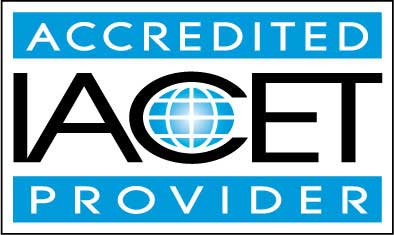Course Description
Tracking tools are an important part of a website toolkit. Google Analytics is one of the most popular tools for tracking website user patterns, so webmasters can identify landing page strengths and weaknesses. Google offers the tool for free. All you need is a Google account and an overview on how to work with each dashboard graph.
This course covers a beginner to intermediate level introduction to Google Analytics. It walks you through the set up process and helps you work with important dashboard metrics that you can use to improve website conversions and traffic. It shows you how to set up customized reports and link your Analytics your account with other integral Google properties such as Adwords, Webmasters Tools and Adsense.
Goals, filters and segments are covered, so you can control the data you see in each graph and create specific reports on common elements important to webmasters such as sessions, users, unique visitors and pageviews. The course also shows you how to track conversions, so you know if your marketing pages are converting traffic to customers or falling short and harming your sales.
Finally, this course covers basic SEO metrics linked between Google Analytics and Webmaster Tools. You'll learn to identify common search engine phrases on your site that have impressions in result pages when users perform a query.
If you don't understand Google Analytics, you're missing out on an entire suite of tracking metrics and optimization opportunities. Use this course to get started with Analytics and start improving your site's overall ROI.
- Completely Online
- Self-Paced
- Printable Lessons
- Full HD Video

- 6 Months to Complete
- 24/7 Availability
- Start Anytime
- PC & Mac Compatible
- Android & iOS Friendly
- Accredited CEUs

Learning Outcomes
By successfully completing this course, students will be able to:
- Define key Google Analytics metrics such as bounce rate and conversion rate to evaluate website performance effectively.
- Demonstrate the ability to set up a Google Analytics account and integrate the tracking code into a website's HTML to collect user data.
- Define the concept of sessions in Google Analytics, including adjusting session duration settings to match user engagement patterns.
- Demonstrate how to customize and use Google Analytics' segmentation features to analyze specific user behaviors, demographics, and device usage, and apply these insights for targeted marketing strategies.
- Evaluate the factors impacting site speed through Google Analytics data and implement targeted improvements to reduce load times and increase page retention.
- Identify key patterns in user behavior using the 'Behavior' section of the Analytics dashboard to optimize user interactions and enhance engagement.
- Recognize and evaluate the effectiveness of content optimization strategies, including multimedia integration and personalized experiences, to enhance user interaction and drive conversions.
- Define and describe key metrics such as bounce rate and exit percentage using analytics tools to assess and improve user engagement on websites.
- Analyze user engagement patterns such as 'Pages Per Session' and retention rates to optimize content delivery and increase conversion through user experience enhancements.
- Define the demographic characteristics of the audience using the 'Audience' section in Google Analytics to enhance targeted marketing strategies and improve ROI.
- Demonstrate the process of setting up filters in Google Analytics to accurately exclude unwanted traffic sources and improve the quality of web analytics data
- Recognize the importance of filtering data in Google Analytics to ensure accurate representation of website traffic and eliminate noise from non-human or internal accesses
- Define specific, measurable goals in Google Analytics to track and enhance website performance, such as conversion rates and user engagement metrics.
- Demonstrate mastery of lesson content at levels of 70% or higher.
Assessment Guide
| Assessment | Points |
|---|---|
| Why this Course? | 1 points |
| Lesson 1 Exam | 10 points |
| Lesson 2 Activity | 1 points |
| Lesson 2 Exam | 10 points |
| Lesson 3 Activity | 1 points |
| Lesson 3 Exam | 10 points |
| Lesson 4 Exam | 10 points |
| Lesson 5 Activity | 1 points |
| Lesson 5 Exam | 10 points |
| Lesson 6 Exam | 9 points |
| Lesson 7 Activity | 1 points |
| Lesson 7 Exam | 10 points |
| Lesson 8 Exam | 10 points |
| Lesson 9 Activity | 1 points |
| Lesson 9 Exam | 10 points |
| Lesson 10 Exam | 10 points |
| Lesson 11 Exam | 10 points |
| Lesson 12 Activity | 1 points |
| Lesson 12 Exam | 10 points |
| The Final Exam | 60 points |


